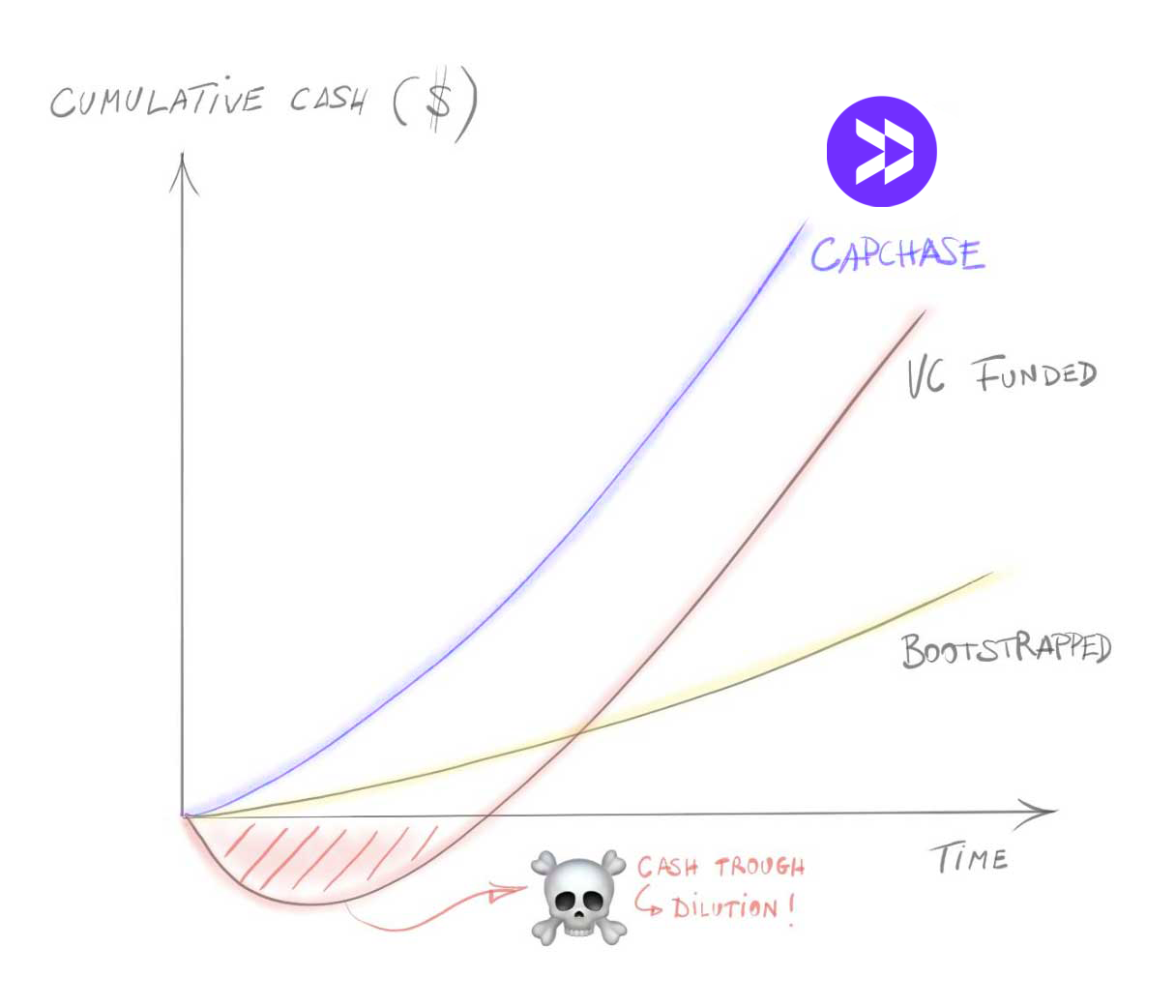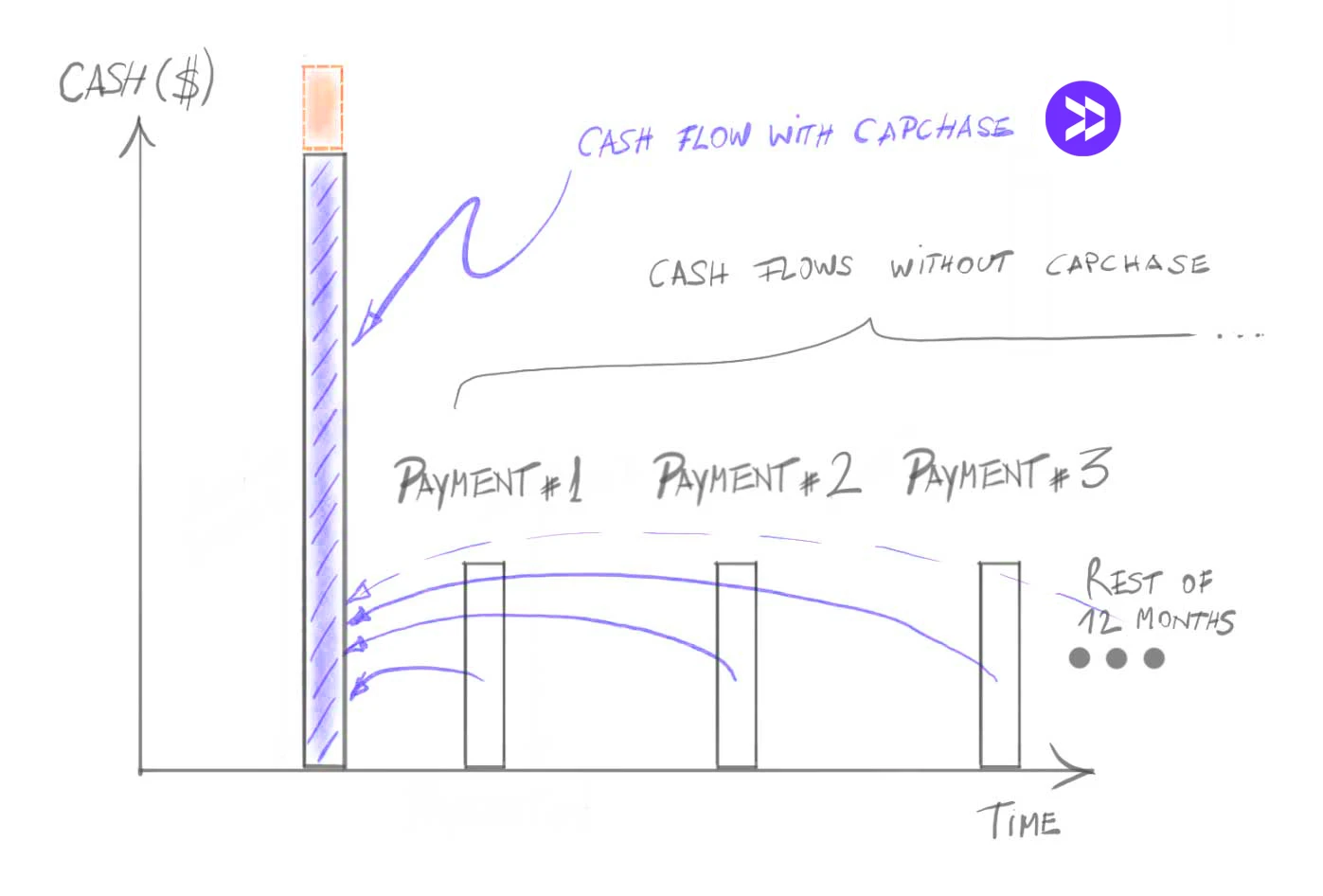Bootstrapping is challenging. I have huge respect for SaaS founders that manage to pull together the working capital to pull it off. Bootstrapping requires relying on the revenue your company generates rather than outside SaaS venture capital. This means owners must be disciplined with cash management and balancing revenue with expenses- down to the dollar level. Very few SaaS companies manage to rely completely on bootstrapping throughout their growth journey.
Bootstrapping becomes even more difficult to pull off during challenging macroeconomic times. The current downturn has affected millions of SMBs and enterprise-level businesses across the US and globally, and has made bootstrapping harder than ever.
Does funding with SaaS venture capital make sense for your business funding?
Bootstrapping is as non-dilutive as it gets for startup funding and working capital, and provides all the typical benefits of non-dilutive capital: freedom, maintaining equity, and the chance to stay in contral of your business. But for SaaS founders, there’s a huge advantage in partnering with a good venture capitalist (VC) early on. Sure, the most obvious benefit of this is that they provide you startup funding, but money is the least important thing they bring to the table. A good early-stage SaaS VC will help you with subsequent financing and growth capital, determining product-market fit, and setting up the company’s structure to enable scaling.
Here's how the pros and cons of SaaS venture capital breaks down.
Good news: VC money will help you invest early on in your product without having to worry so much about traction. This means that the desired “SaaS hockey stick” growth model can turn out steeper than when bootstrapping.
Bad news: It comes at a steep cost; dilution and loss of ownership. You have sold a large part of your business to an investor and acquired a “boss” in the process.
To think of it visually, let’s say your company is a pie. When you partner with a VC, you give away some of the pie and only leave yourself a slice. A good investor will help you multiply the value of the entire pie, so that it may end up 10x or even 100x bigger than the origial pie. Consequently, the slice you kept will increase in size, to the point that it could be much bigger than your original pie.
But on the other hand, the slice you sold to the investor will also get much bigger and more valuable—sometimes bigger than your slice. And even though the VC helped create this increase in value, you still may feel bitter that you couldn’t have kept the entire pie. This is why the cost of raising VC money is the highest you will ever pay. To get the highest return, that money is best spent in product development, attracting “10x” talent, and acquiring customers.
But dilution is not always the solution.
Other necessary expenses, like investment in software, infrastructure and working capital can be covered with much cheaper sources: non-dilutive funding solutions.
Let’s look at the four most common non-dilutive funding solutions.

Venture debt
Dilution is tough and you decide you only want to dilute yourself a bit, so you choose the venture debt (or venture leasing) route. But the long venture debt application process is eerily similar to getting VC capital. After several meetings and rounds of pitches, you get a term sheet. After negotiating terms for several weeks, you end up getting only 2-4 times your monthly recurring revenue (MRR). This doesn’t affect your runway much, but the price appears reasonable.
However, when you add legal fees, opening fees, and the equity warrant, SaaS venture debt is not only ineffective, it’s also very expensive. On top of that, there are senior claims to your assets in the event of a default—so neither you nor your investors will see a dollar until they are paid in full.

SaaS Invoice Factoring
SaaS invoice factoring solves cash flow problems.
Let’s say you sell a service to a customer with net 30 payment terms. You invest time and talent, deploy the service, and then must wait 30 days to get paid. If you do this with too many customers, you can run out of cash before the money comes in. That’s why SaaS invoice factoring was invented. A factoring company buys an issued invoice from you at a discount and gets paid (in full) by your customer.
You get most of the money quickly, which is great. But your customer suddenly gets an email from an unknown party saying that now, to pay for your services, they (the customer) must redirect the funds to said factoring company. This may signal that you are running out of cash, which could become a big concern for your customers. Plus, you give up an ongoing opportunity to build relationships with your customers, and SaaS invoice factoring feels like debt collection to them (yuck).
SaaS factoring is also operationally burdensome, as you need to factor each invoice you issue-- which ins't the best use of your time or your mind-space.

Revenue-based financing
A revenue-based financing provider looks at your performance and loans you 2 to 4x your MRR. There’s a fixed return on those loans, so a fixed percentage from your monthly top line is taken until the loan is paid in full.
Revenue-based financing is particularly well-suited to e-commerce companies. They get a sum of cash, invest it all in marketing, and collect at the end of the funnel. If you have long conversion cycles and unclear conversion metrics, it’s very hard to calculate how much you're going to pay. If your SaaS company is growing fast, you end up paying a lot. Imagine paying back 2.5x what you borrowed in just a few months.

So, you don’t want to sell equity and you don’t want to take on debt. The other financing products are clearly not meant for SaaS. So what’s a SaaS founder to do? Why not look around and see what’s new?
SaaS revenue-based financing with Capchase 🚀
There’s something new on the block, and it’s non-dilutive and it’s not debt-- it’s Capchase.
With Capchase, there’s no waiting for months to be paid by customers, and no cash flow gaps to bridge. No SaaS venture capital that eats up your equity, and no discounted payments on your invoices. Here're our solutions for SaaS founders:
- Providing business funding and growth capital that lets you keep your full stake in the business
- Leveraging your annual recurring revenue (ARR) to provide a customized funding offer.
- Providing a year’s worth of growth capital within 48 hours
- Scaling with your ARR so the faster you grow, the more upfront funding you can count on
You don’t need to renegotiate terms to get extensions. You don’t have to negotiate to get your customers to pay upfront. If your competitor forces upfront payment and you offer flexible payment terms, guess who’s getting the customer- it won’t be the company that forces their customer to set aside a big lump of cash for a service they will use throughout a year- it will be you.
Get started getting capital for your SaaS company.




